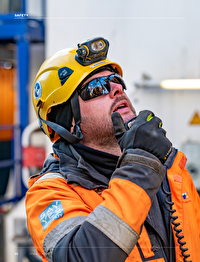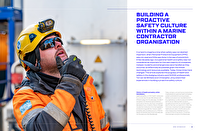History of health and safety within the industry
Health and safety, or HSE (Health, Safety and Environment as it is now referred to) is very different today from 50 years ago. The idea of workplace HSE has advanced tenfold and continues to improve, resulting in the gradual decrease of injury incidents. Recent changes include the introduction of stricter legislation and sentencing guidelines. However, health and safety was not always a priority. What we see as the standard way of working today was not the case just a few decades ago.
Today, company cultures have evolved entirely. A specialised occupational health and safety system combined with a strong company (safety) culture are must-have elements of any organisation in order to improve the safety performance. Relating health issues to occupations and their environments goes back further than you might think. In fact, the first known instance of correlation between health and work was in the 4th century BC when Hippocrates noted lead toxicity in workers of the mining industry. Since then, there has been a long list of professionals, physicians and researchers examining work environments and the impact they have on a human’s health and well-being.
Due to rising number of incidents in the 1970s, the idea of occupational health and safety began gaining momentum. Governments around the world implemented an appropriate legislative framework to set and enforce standards that would improve the safety conditions of the workplace. Unfortunately, as is often the case, a few major catastrophes accelerated this process. First, the Seveso disaster of 1976, in which an explosion at a chemical plant in Meda, north of Milan, released a chemical cloud containing the highly toxic dioxin. Thousands of animals died and many local residents experienced health problems for decades. In 1984, more than half a million people in Bhopal, India, were exposed to toxic gas from a chemical processing plant with poorly-maintained pipes. Within a month, 80,000 people had died. And in 1988, the Piper Alpha platform in the North Sea, 190 km north-east of Aberdeen, Scotland, exploded and sank killing 165 crew on board.
The International Safety Management (ISM) code
Relevant for the dredging industry was the introduction in 1998 of the International Safety Management (ISM) code by the International Maritime Organization (IMO). The purpose of the ISM code is to provide an international standard for the safe management and operation of ships and for pollution prevention. It was born out of a series of serious shipping accidents in the 1980s. The worst of which was the roll-on/roll-off ferry Herald of Free Enterprise that capsized moments after leaving the Belgian port of Zeebrugge on the night of 6 March 1987, killing 193 of its 539 passengers and crew. The cause of this and other accidents was a combination of human error on board and management failings on shore.
Following these catastrophes, the world began focusing on environmental health and safety more than ever before. The chemical and the oil and gas industry led the charge, establishing a set of fundamentals to help ensure product and asset safety, environmental protection and occupational health. As a result, the occupational health and safety performance in the dredging industry at the end of the 1990s was mainly driven by legislation and certain clients.
Fast forward to 2022 and the dredging industry has achieved significant progress concerning its occupational health and safety performance after having adopted the right mindset over the last decades. The changes are a result of a long journey, with the necessary “learning” hiccups along the way. As well as the key moments and changes within the industry, there has been one continuous factor over the past 50 years – the motivation and willingness to improve.
Health and safety performance
There are three main shifts that improved occupational health and safety performance over the past decades:
- Improvement of technology and standards.
- Implementation of management systems.
- Change in culture.
The theoretical scheme in Figure 1 shows how these three shifts influenced the reduction of the incident rate over time. However, it is important to note that today the three topics cannot be separated and continuous effort given to all three is necessary in order to improve even further. This is especially the case when, for example, new activities are implemented and new equipment is used such as in the renewable energy market.
















